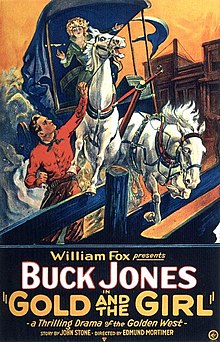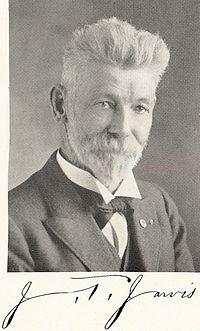콜럼바이트
Columbite| 콜럼바이트 | |
|---|---|
 | |
| 일반 | |
| 카테고리 | 산화물 광물 |
| 공식 (유닛) | Fe2+ Nb 2O 6 |
| IMA 기호 | 클럽[1] |
| 스트룬츠 분류 | 4. DB.35 |
| 수정계 | 정형외과 |
| 크리스털 클래스 | 쌍방향체(mm) H-M 기호: (2/m 2/m 2/m) |
| 스페이스 그룹 | Pbcn |
| 신분증 | |
| 색. | 검정, 갈색이 도는 검정. |
| 수정 습관 | Massive - Granular - 화강암 및 기타 화성암에서 흔히 볼 수 있는 텍스처; Striped - 결정 표면 또는 균열면에 평행한 선. |
| 갈라짐 | [010] 고유 |
| 골절 | 서브콘호이덜:반곡면으로 특징지어지는 부서지기 쉬운 재료에서 골절이 발생하였습니다. |
| 모스 척도 경도 | 6 |
| 광택 | 서브클라이언트 |
| 스트릭 | 거무스름한 갈색 |
| 비중 | 5.3 ~ 7.3, 평균 = 6.3 |
| 광학적 특성 | 이축(+), b=2.29~2.4 |
| 기타 특징 | 방사능, 비형광성. |
| 레퍼런스 | [2][3][4] [5] |
니오바이트, 니오바이트-탄탈라이트, 컬럼베이트 [(Fe, Mn)NbO
2
6]라고도 불리는 컬럼바이트는 니오브의 광석인 흑색 광물 그룹입니다.아금속 광택과 고밀도를 가지며 철과 망간의 니오브산염이다.이 광물군은 미국 코네티컷주 해담에서 처음 발견되었다.탄탈우성 아날로그 페로탄탈라이트 및 망간우성 아날로그 망가노콜럼바이트와 직렬을 형성한다.콜럼바이트 그룹의 철분이 풍부한 구성원은 페로콜럼바이트이다.그 광물에는 약간의 주석과 텅스텐이 존재할 수 있다.이트로콜럼바이트는 식 (Y,U,Fe)(Nb,Ta
4)O의 이트륨이 풍부한 컬럼바이트입니다.그것은 모잠비크에서 발견되는 방사성 광물입니다.
콜럼바이트는 탄탈라이트와 같은 성분과 결정대칭(정통성)을 가지고 있다.사실, 이 둘은 많은 광물 가이드에서 컬럼바이트-탄탈라이트 또는 콜탄이라고 불리는 반단일 광물 계열로 종종 함께 분류된다.그러나 탄탈라이트는 콜럼바이트보다 비중이 훨씬 커 콜럼바이트의 5.[6]2에 비해 8.0이 넘는다.
콜럼바이트는 또한 타피올라이트와 매우 유사하다.이들 광물은 화학조성은 같지만 결정대칭은 다르다.콜럼바이트는 직교형이고 태피올라이트는 [7]사각형이다.컬럼바이트의 가장 큰 문서화된 단결정은 두께 76cm × 61cm (30인치 × 24인치)[8]의 6mm (0.24인치) 판으로 구성되었다.
컬럼바이트는 다양한 양의 토륨과 우라늄을 함유하고 있어 다양한 [9]정도의 방사능을 가지고 있다.
역사와 어원
미국에서 컬럼바이트의 발생은 아마도 코네티컷 식민지 초대 주지사이자 열렬한 광물 수집가인 존 윈스롭 (1606–1676)으로부터 유래한 표본으로부터 알려졌다.600개의 다른 표본들 중에서, 이것은 그의 이름과 손자 존 윈트롭 (1681–1747)이 1737년 [10]왕립학회 회원이 된 후 런던 왕립학회 회장인 한스 슬론에게 기증되었다.
1801년 찰스 해쳇은 이 [11]표본에서 니오브 원소를 발견했는데, 그는 탐험가 크리스토퍼 [12]콜럼버스의 이름을 따서 콜럼버스라고 이름 지었다.
「 」를 참조해 주세요.
레퍼런스
- ^ Warr, L.N. (2021). "IMA–CNMNC approved mineral symbols". Mineralogical Magazine. 85 (3): 291–320. Bibcode:2021MinM...85..291W. doi:10.1180/mgm.2021.43. S2CID 235729616.
- ^ 미네랄에나틀라스
- ^ 컬럼바이트-(Fe) 광물 데이터
- ^ Columbite-(Fe)는 Mindat.org에 있습니다.
- ^ Dampare, S. B.; Nyarko, B. J. B.; Osae, S.; Akaho, E. H. K.; Asiedu, D. K.; Serfor-Armah, Y.; Nude, P. (2005). "Simultaneous determination of tantalum, niobium, thorium and uranium in placer columbite-tantalite deposits from the Akim Oda District of Ghana by epithermal instrumental neutron activation analysis". Journal of Radioanalytical and Nuclear Chemistry. 265: 53–59. doi:10.1007/s10967-005-0860-0. S2CID 97891922.
- ^ mindat.org 탄탈라이트
- ^ P. Cerny 등"탄탈라이트-타피올라이트 격차: 자연 조립 대 실험 데이터" 캐나다 광물학자 30(1992) 587 무료 다운로드
- ^ P. C. Rickwood (1981). "The largest crystals" (PDF). American Mineralogist. 66: 885–907.
- ^ "Simultaneous determination of tantalum, niobium, thorium and uranium in placer columbite-tantalite deposits from the Akim Oda District of Ghana by epithermal instrumental neutron activation analysis". Retrieved 2021-02-02.
{{cite web}}: CS1 maint :url-status (링크) - ^ Winthrop, John (1844). Silliman, Benjamin (ed.). "Art. V. Selections from an Ancient Catalogue of objects of Natural History, formed in New England more than one hundred years ago". The Amer. J. Science and Arts 47. New Haven: Baldwin, Cradock, and Joy. p. 282. Retrieved 12 February 2015.
... (p.282:) Mr. Winthrop was grandson of the first governor of Connecticut, great grandson of the first governor of Massachusetts ... (p.290:) A black mineral ... Is this the Columbite? ... it appeared that it had been sent ... to Sir Hans Sloane, by Mr. Winthrop of Massachusetts. ...'
- ^ Griffith, William P.; Morris, Peter J.T. (22 September 2003). "Charles Hatchett FRS (1765–1847), Chemist and Discoverer of Niobium" (PDF). Notes and Records of the Royal Society of London. London: The Royal Society Publishing. 57 (3): 359. doi:10.1098/rsnr.2003.0216. S2CID 144857368. Retrieved 12 February 2015.
... In 1800–01, while he was arranging some minerals at the British Museum in Bloomsbury, he became particularly interested in a specimen which was described in Sir Hans Sloane’s catalogue of the ‘Metalls’, no. 2029 from his collection, as ‘a very heavy black stone with golden streaks ... from Nautneague. From Mr. Winthrop’ ... The donor was probably John Winthrop (1681–1747), a great-grandson of the founder of Massachusetts Bay colony. When Winthrop was elected FRS in 1734 he gave Sir Hans Sloane, then President of the Society, a collection of about 600 minerals. ...'
- ^ Jameson, Robert (1805). System of Mineralogy, Vol. II. Edinburgh: Bell and Bradfute (et al.). p. 582. Retrieved 15 February 2015.
... Mr Hatchett found it to contain a metal, which, from its properties, could not be referred to any hitherto known; hence he was of opinion that it should be considered as a new genus, to which he gave the name Columbium, in honour of the discoverer of America. ...'
외부 링크
 Wikisource 텍스트:
Wikisource 텍스트:- "Columbite". New International Encyclopedia. 1905.
- "Columbite". Encyclopædia Britannica (11th ed.). 1911.
- "Columbite". Collier's New Encyclopedia. 1921.


